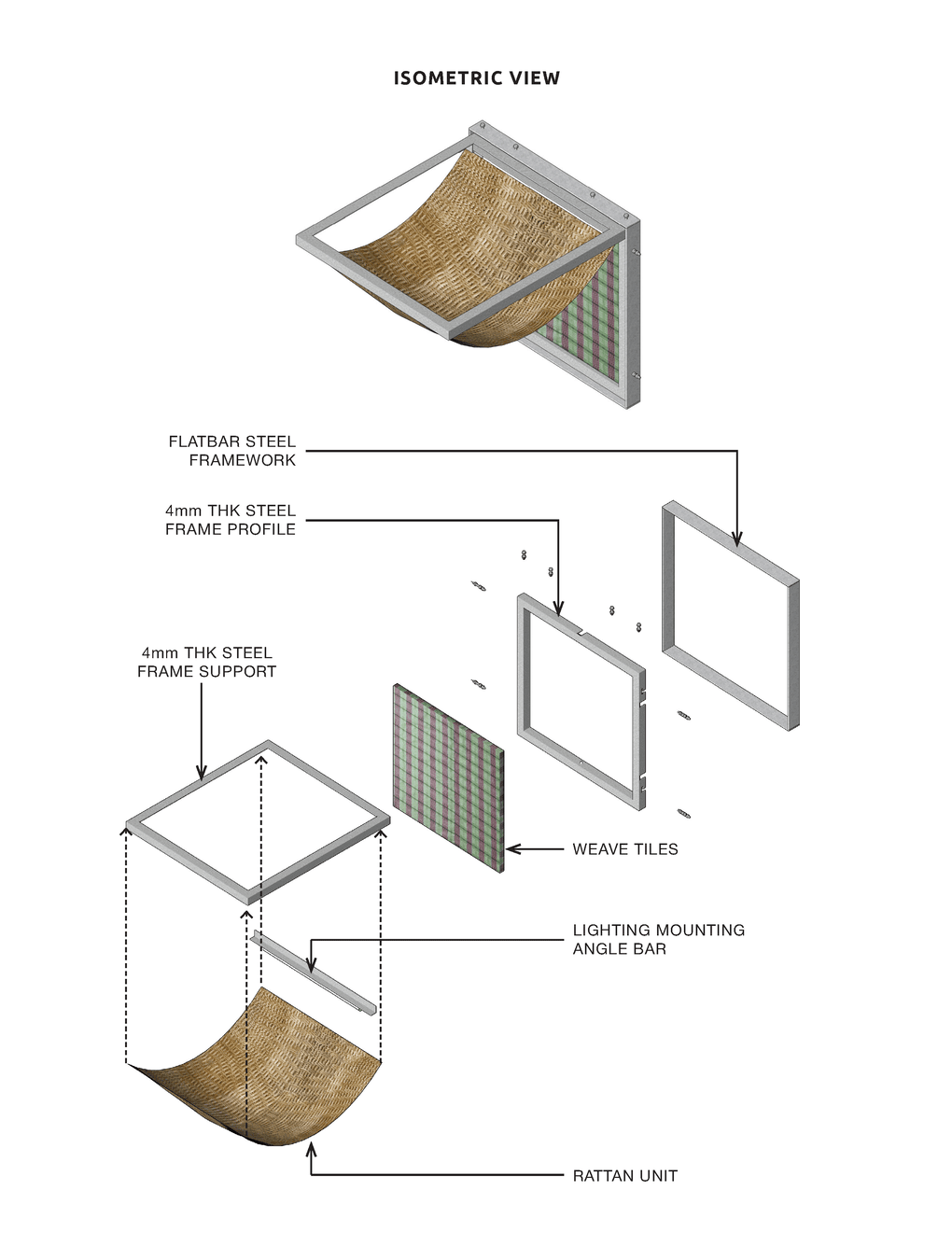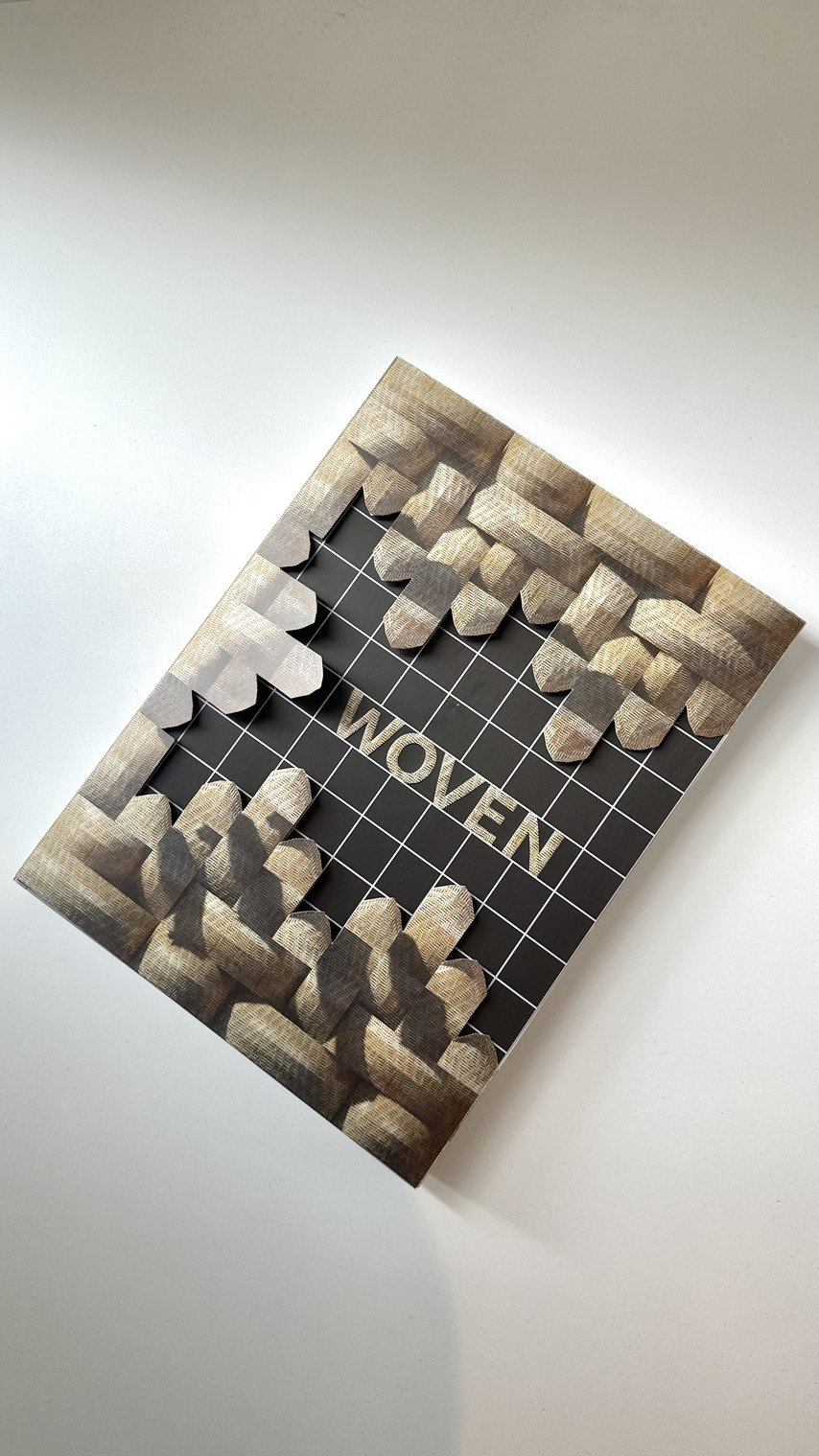Words Patrick Kasingsing
Images Tourism Promotion Board (TPB),
Carlo Calma Consultancy, and Tellart


“The Philippine Pavilion will be one of the first things you’ll see upon entering the Expo grounds,” says Carlo Calma, the creative director of Carlo Calma Consultancy, as I prepped for my trip to Osaka. “As soon as you get off the train station, the pavilion will greet you from one of the main entryways framed by Sou Fujimoto’s wooden ring. It’s a homecoming for our kababayans in Japan and visitors from the Philippines!”
Visiting the Expo Osaka 2025 grounds, located on Yumeshima (Dream Island in English) in the Seto Inland Sea, was an especially thrilling experience, as it was also my first trip to Japan. A bit of context on Yumeshima: the island had remained largely unused since its creation in the 1990s, housing two massive container terminals until Osaka was chosen to host the 2025 Expo back in 2017. This set the stage for the island’s transformation, with plans for Olympic Villages for a 2008 bid, logistics hubs, and integrated resorts previously falling through. The theme of the Expo, “Designing Future Society for Our Lives,” reflects the reversal in Yumeshima’s fortunes and brings the island a step closer to fulfilling the promise of its name.


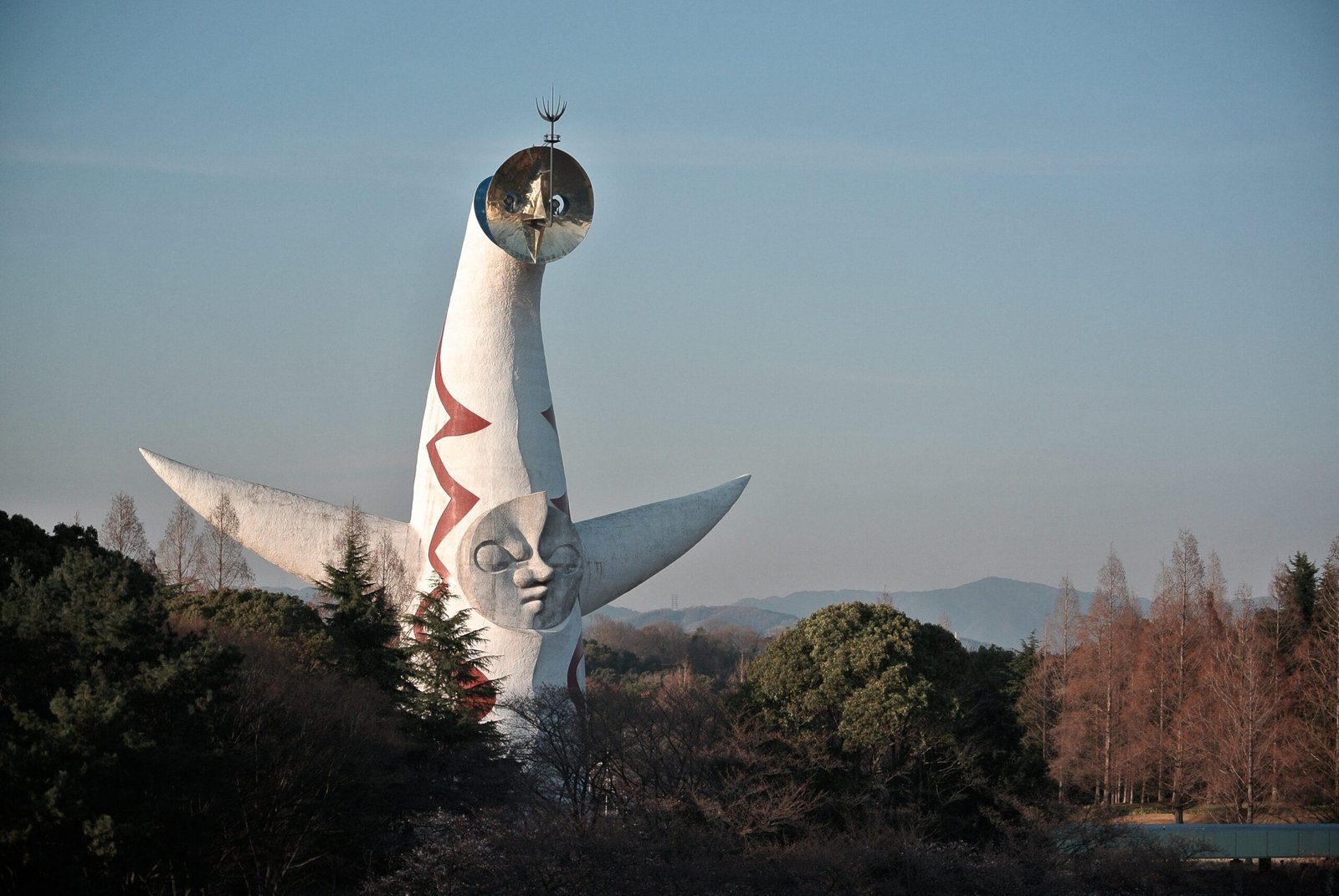

History lesson
While my nerves were fraught navigating a foreign land for the first time, the anxieties of the Expo Osaka 2025 organizers are surely on a different scale. The road to opening day has been bumpy to say the least, with rising construction costs, a methane gas scare, country pullouts, and unsteady levels of public support. The team behind Expo 2025 has big shoes to fill, especially with magical Expo Osaka ‘70 still etched in public memory. Its monumental success, with over 60 million visitors (an attendance record only beaten after four decades by Shanghai 2010), left behind iconic structures and groundbreaking inventions, including Sanyo’s infamous human washing machine. The most enduring symbol of Expo ’70, the 70-meter-tall Tower of the Sun by Tarō Okamoto, still stands proud over Osaka today. Whether Expo 2025 will leave behind a similarly lasting legacy remains to be seen, but this early glimpse of Yumeshimanaka is filled with promise.


Entering the Expo grounds with Philippine Pavilion creative producer Chochay Garcia, I was surprised by the palpable energy on-site—far from the waning enthusiasm I had expected. Everywhere I looked, there was activity: hundreds of media professionals milled the site, with pavilion teams in various stages of preparation, and construction workers rushing buildings to completion. The showstopper, however, was Sou Fujimoto’s 2-kilometer, Guinness World Record-holding all-wood Grand Ring. It commands immediate attention, dwarfing everything around it. Despite the scale, the structure is approachable and judging from the number of people on and under it during my visit, definitely no mere architectural garnishing. It’s akin to an oversized piece of furniture: impressive, functional, and beautiful.
Watching the sun catch the intricate network of timber beams that make up Fujimoto-san’s creation was a sight to behold. The structure manages to feel both new and familiar, with joinery techniques that harken back to traditional Japanese architecture in a contemporary shape. Serving as a shaded arcade, observation deck, and perimeter fence, the hope is that the ring remains long after the Expo.
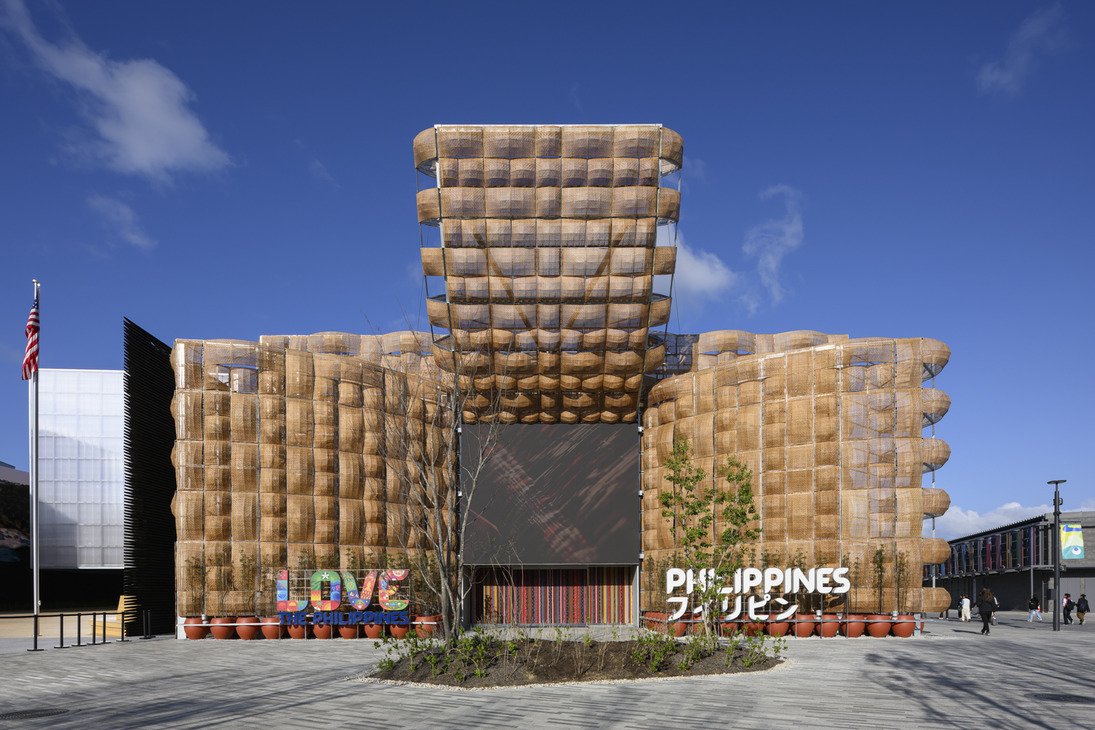

A rattan memory box
As Calma had promised, the first thing that caught my eye as Garcia and I entered through the East Gate was the Philippine Pavilion, its rattan weaves splayed across a steel frame, with a large video screen above the entrance looping footage of weaving. To its left, the USA Pavilion’s mirrored surfaces and massive screens await, while the Coldefy-Ratti-penned France Pavilion’s copper staircase and curtained volume loomed behind. To the right, Kengo Kuma’s bamboo-screened Malaysia Pavilion completed the scene.
Much is at stake for the Philippine Pavilion, a 693.86-square-meter, double-height space designed by Calma with whom Kanto had the pleasure of speaking during last year’s pavilion launch. True to his energetic style, the pavilion employs a plethora of textures and façade-shell acrobatics to mask the boxy structure that holds the programming. A large screen above the entrance loops footage of threads being spun into cloth, shaded by a canopy that evokes the shape of an eyelash. The pavilion is completely clad in rattan, each module painstakingly crafted by artisans, shipped from 2019 UNESCO Creative City for Design, Cebu. While not designed to compete or exceed it, comparisons with Expo Osaka ’70 are inevitable; that pavilion, one of the smallest, made a lasting impact with National Artist Leandro Valencia Locsin’s elegant, wooden prow-shaped design, becoming one of the top ten most visited and with a simple, memorable form still largely admired by the architectural community. As of writing, the 2025 Osaka pavilion has already attracted more than 40,000 visitors nine days after opening day.
Garcia, a former marketing executive turned pavilion creative producer, was tasked with encapsulating the identity of 7,641 islands in a single space while addressing the Expo’s theme. She is joined by Carlo Calma Consultancy (lead architecture firm), Tellart (experience design) and Yuki Kanou (executive architect and project manager) as part of the curatorial team.
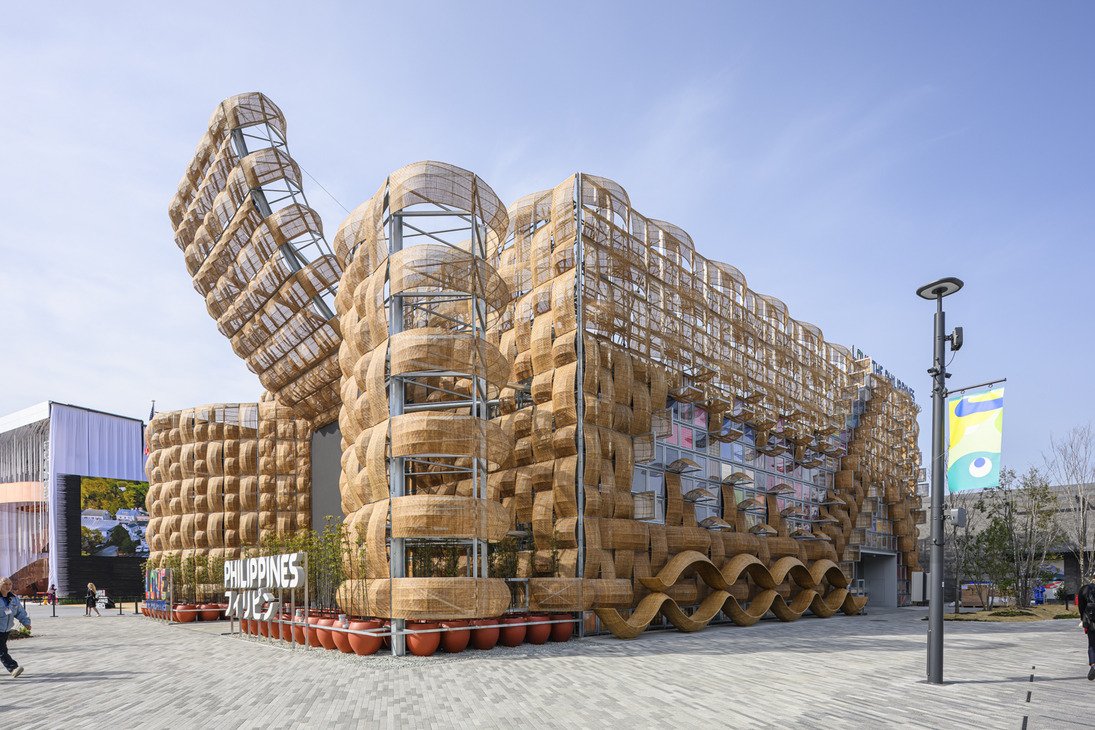



“Our nation’s strength lies in its diversity,” Garcia shares, “In line with the Expo’s theme, the Philippine Organizing Committee, led by the Department of Tourism (DOT) and the Tourism Promotions Board Philippines (TPB) chose Nature, Culture & Community: Woven Together for a Better Future to convey how we can weave new stories and connections by bridging tradition and technology. Weaving together people, culture, and nature represents who we are as a nation—rich in diversity and natural beauty. In the context of weaving alone, we have an incredible variety of indigenous textile motifs and techniques, a fact I’ve seen firsthand during our many research trips. The pavilion’s façade showcases 212 of these weaves, representative of a nation of creators.”
On Calma winning the TPB-hosted Philippines Pavilion architecture pitch, Garcia was all praise: “Calma won the jury’s votes as he not only was able to express the theme with a compelling structure but his dedication and passion to the project far exceeded its shell. He also shared plans on exhibits and programming. When he won the commission, he really went out of his way to talk to the craftsmen and textile weavers, traveling all over the country to learn and source the fabrics. There is intense passion and drive in Carlo to really get this pavilion right.”


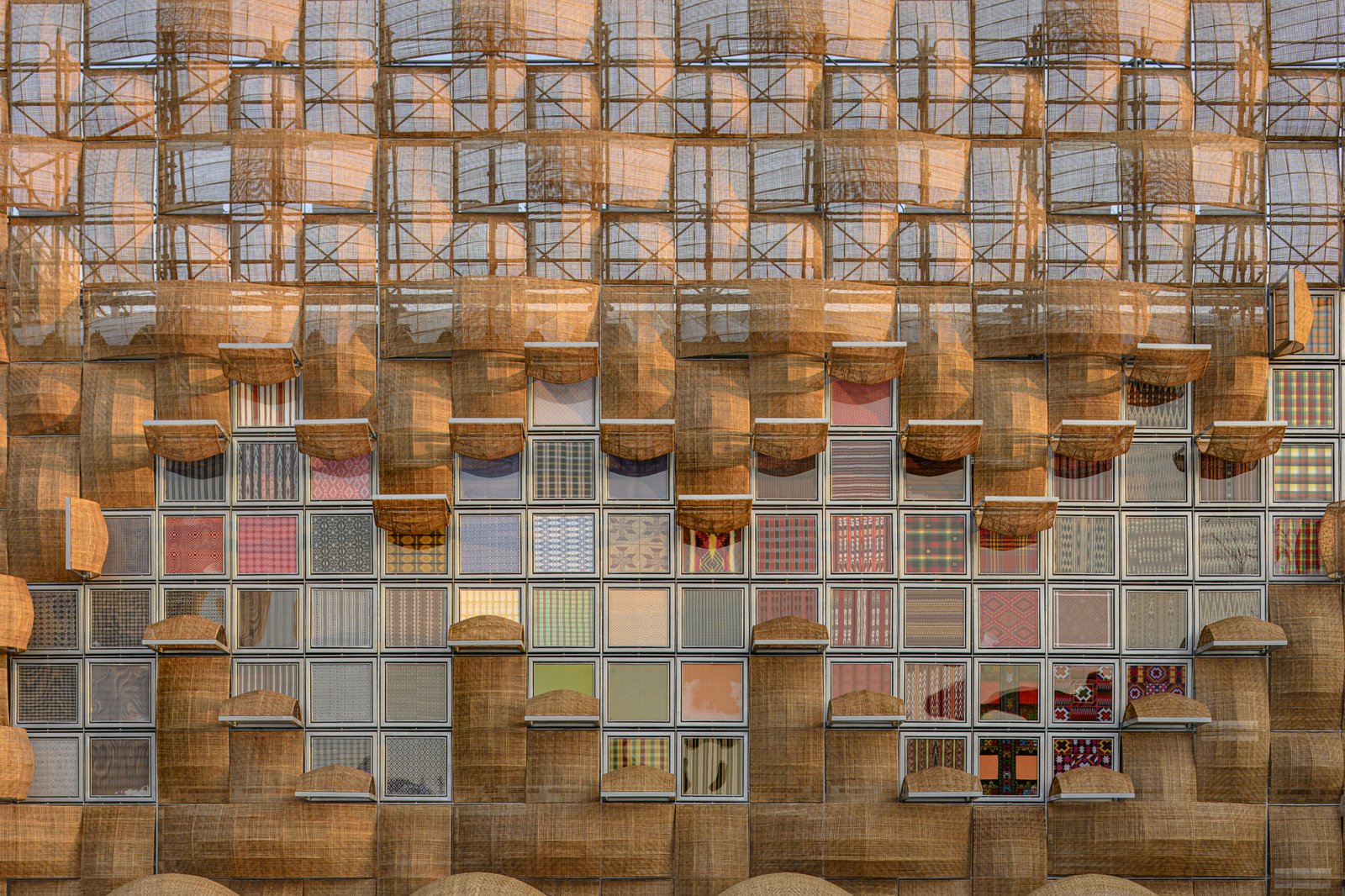

Of note is the pavilion’s location, situated in the Empowering Lives Zone of the Expo. “At the heart of the Philippine Pavilion’s theme and experience are the weavers, who represent a national craft central to our pavilion’s concept. We are very proud to showcase the work and craftsmanship of our hardworking and talented weavers across the Philippines. This pavilion in fact, marks the largest-ever collaboration of Filipino weavers in one project, bringing much-needed awareness and representation to these communities,” Calma adds.

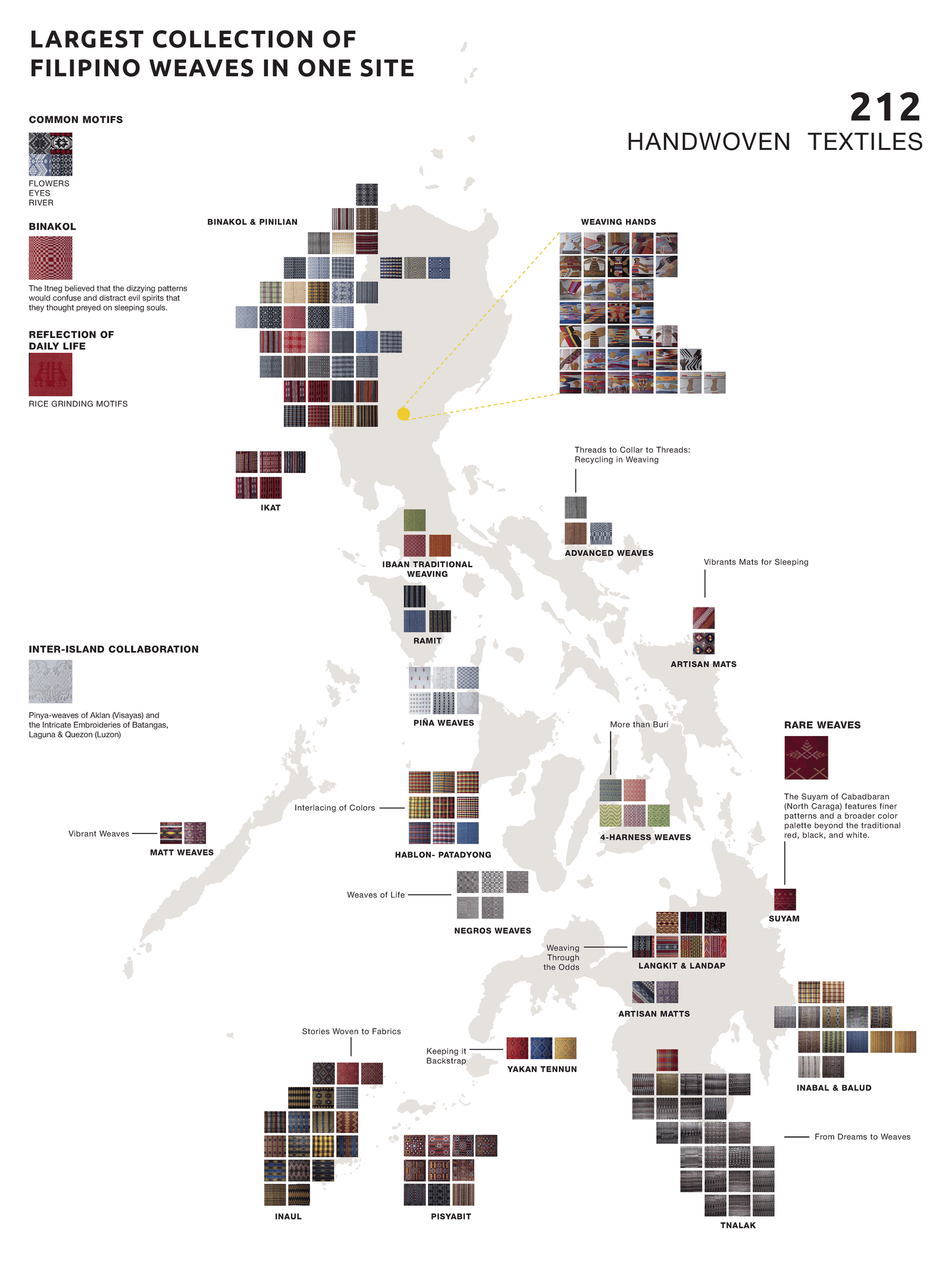
The pavilion presents a glimpse into TPB’s ongoing Community Based Tourism (CBT) program to empower local communities as stewards and guides of their own regions. The CBT initiative aims to encourage international tourists to explore beyond the usual destinations in the Philippines. 121 communities across the archipelago, represented by 2,331 weavers, make their presence felt through textiles and objects featured in the pavilion’s exhibits.
While the concept of weaving does hold a lot of visual and narrative potential, it is also one of the most used metaphors to connote connection amidst diversity. How do you reinvent a well-trodden wheel? “You are right, of course; weaving as a metaphor for connection is not original,” Garcia responds, “But I feel there is still power and connection in the familiar, but also a challenge; how do you present the familiar but also imbue it with a renewed sense of discovery and wonder.”
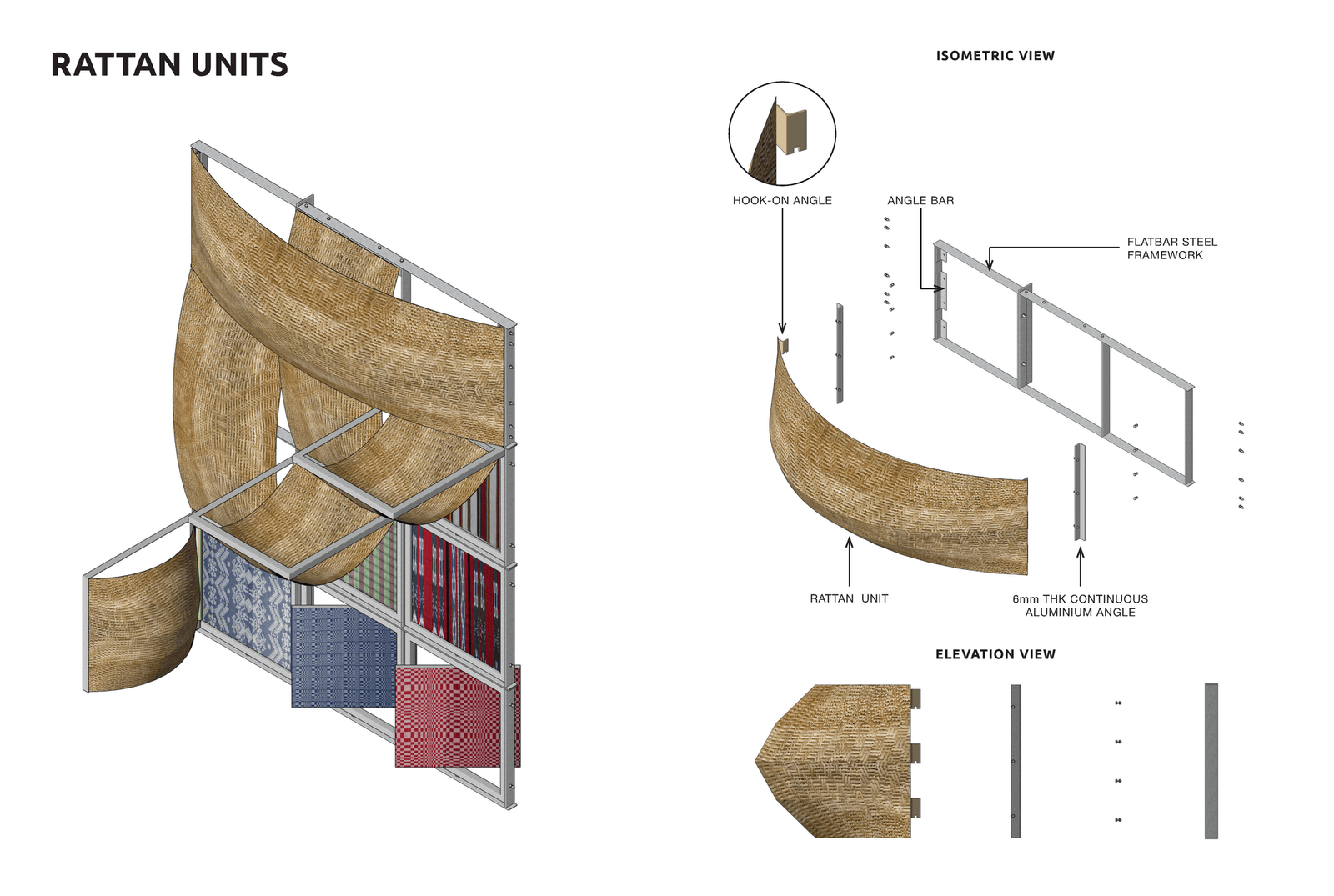

We are no strangers to rattan, a material long associated with some of the best Filipino furniture designs. In the Philippine Pavilion, it takes on a new role as architectural cladding. The 874 rattan modules, making use of nearly a thousand rattan threads and in 27 distinct components, are meticulously arranged on the exterior frame to mimic the interlocking fibers of a weave. This novel use of rattan harkens to tradition but also brings functional benefits as its modular design allows for easy shipping, a feature shared by other components like the indigenous textile swatches. This modular approach makes it feasible to restage the experience in different locations after Expo 2025 should its organizers decide to.
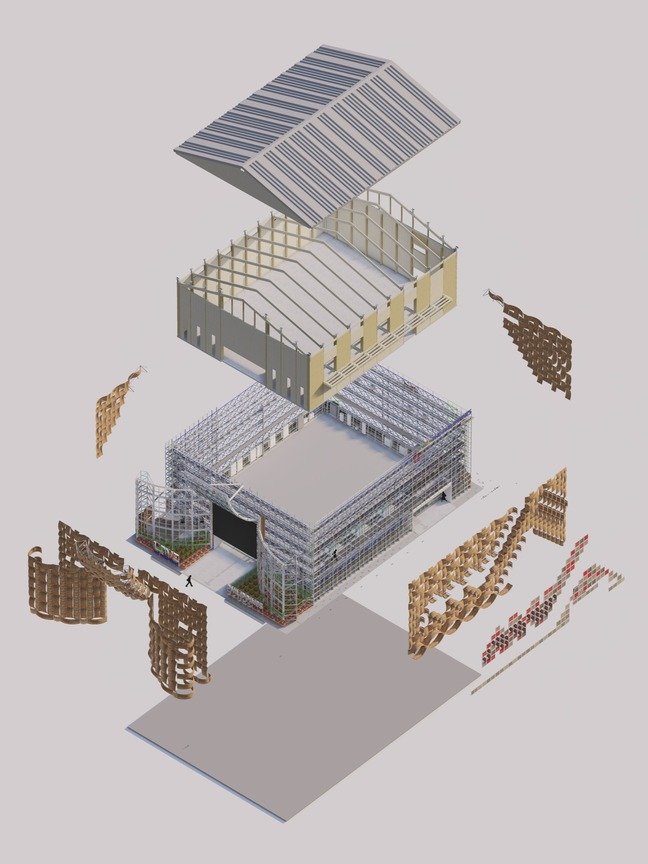

Wonder in the familiar
To ensure the pavilion offers a sense of discovery for visitors—and rediscovery for Filipinos—TPB, with Garcia’s recommendation, approached the Amsterdam-based experience design studio Tellart for the experience design. “From the beginning, we knew we didn’t want a traditional gallery or museum experience,” Garcia explains. “We wanted people to touch the textiles, feel the surfaces, dance to music, take selfies—all the things that make Filipinos beloved around the world. We’re fun, we hug, we dance, we sing! We needed a fully sensory experience, something Tellart excels at.” Garcia had prior experience with Dutch experience studio’s multi-awarded body of work. “I was based in London and attended a Google immersive installation. I was captivated by the whole experience.”
Tellart, veterans in compelling experiential design since 2000, gamely took on the challenge. But before immersing expo visitors in the Philippine experience, the team had to go through their own immersion in our sun-drenched isles. “We visited beaches, mountains, and ate all the fresh seafood, but my most memorable Philippine experience was the tattooing session with Apo Whang Od,” Pim Schachtschabel, design director of Tellart shared. “He almost fainted from the experience,” Garcia laughs.
I suggest that involving a foreign firm gives a fresh perspective on cultural matters, as we might have developed a blind spot living in The Philippines. Schachtschabel agrees, adding, “The fresh views help, especially when we were trying to gather research from tourism offices across the country. We wanted to identify ‘essences’ or anchors for each region. Every region is rich in experiences and color, but we needed an anchor that fit within the limited space of the pavilion. These essences needed to be evocative of each region, a compelling starting point for visitors’ imaginations and interactions, enriching their experience further.”
“That’s great; it validates every experience as an extension of the diversity that defines our islands,” I say.
“Yes! This is where AI and the immersive technologies we’ve honed over the years come in,” Schachtschabel adds. “We use these tools to build on these regional essences, creating new, intriguing ways for people to experience cultural institutions.”


A brief walkthrough
The pavilion wasn’t fully completed when I visited, but the main sensory set pieces were already in place. “Follow me here,” Garcia says, leading us back to the entrance, where a curtain of white ribbons, meant to echo threads, grazes our shoulders. In the darkness that greets each new group of twenty, the ribbons begin to shimmer—brought to life by projection mapping, sound, and shifting light.
“We wanted the intro to feel physical and intimate,” Garcia says as we pass through the tunnel of ribbons. “Like a handshake, or a friend pulling you forward.” A voiceover in English and Japanese introduces the pavilion, while the mechanical rhythm of a weaving loom pulses in the background.
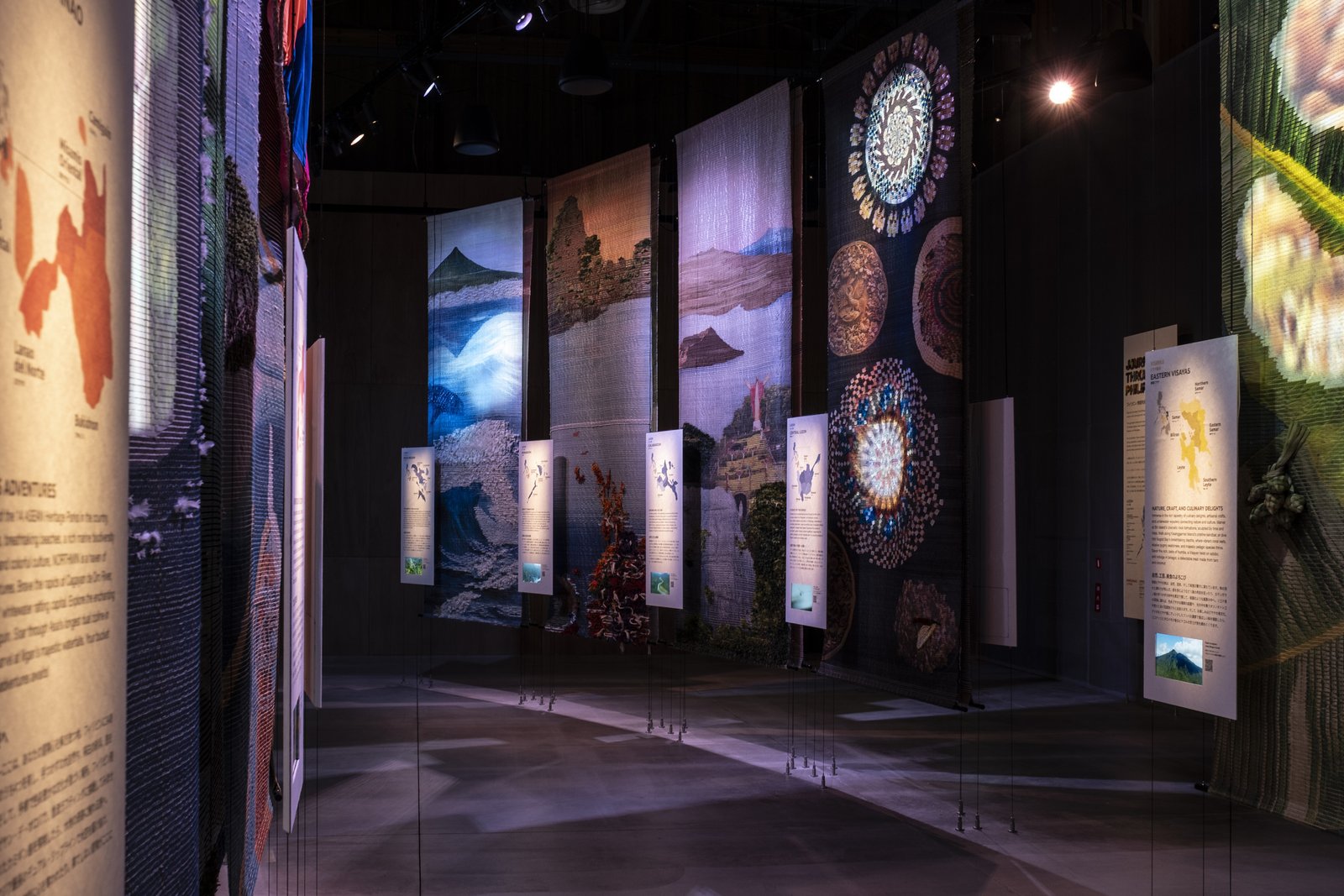

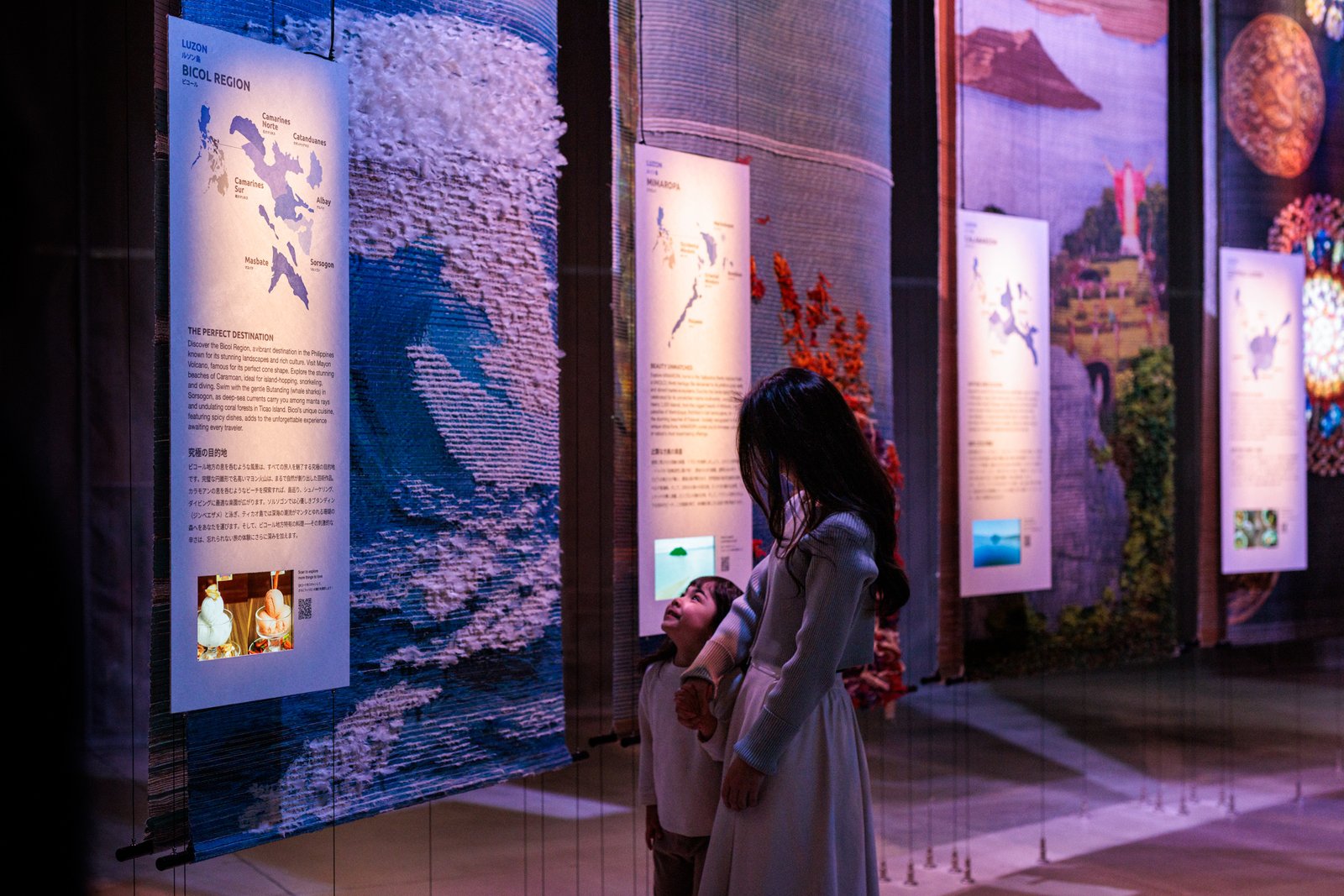

We stepped into a multicolored, double-height space where 18, four-meter-long tapestries hung from the ceiling—one for each of the country’s regions across the three island groups. Each piece, which took six months to fabricate, reflects the “essences” Tellart had spoken about earlier, interpreted by artisans using not just textile but Capiz shell, feathers, beadwork, and threading techniques that give the works their texture and dimension. The tapestry for the Cordillera region, for instance, uses layered cuts and dense threading to mimic the rugged surfaces of its iconic rice terraces, more abstract than literal, but clearly referential.
As if anticipating my next thought, Garcia gestured for me to touch them. “What we love about these tapestries is how they reward slow looking,” he said. “There are details that won’t register right away. Like these bits of Capiz here, or how from a distance, they form a school of fish.”
“You won’t be around to see the lighting and projection,” Schachtschabel added, “but each tapestry will be animated. What you’re seeing now is just the canvas. The stories of each region will unfold on top of it.”




The next section of the pavilion requires a bit of dancing and letting one’s hair loose. While I was only around during the screen tests as it wasn’t quite ready for my visit, Garcia and Schachtschabel explained what would be at play as we came face to face with a massive 12-meter-by-3.1-meter screen in front of what I imagine to be the “dance floor.”
“So, we wanted to emulate the energy and color of the iconic fiestas in the Philippines, but with a natural twist,” the Dutch designer shares with a grin. “You take the avatar of a nature spirit, an anthropomorphic figure, and you face the screen. The more you dance to the music of say, a marine festival, or a flower festival, the more the visuals get animated and energetic. It takes a bit of audience participation to really get the party going.” I had to chuckle as I had my misgivings whether this would be a hit with more uptight foreign attendees, but I have no doubt Pinoy visitors would gamely partake in the cheesy fun.
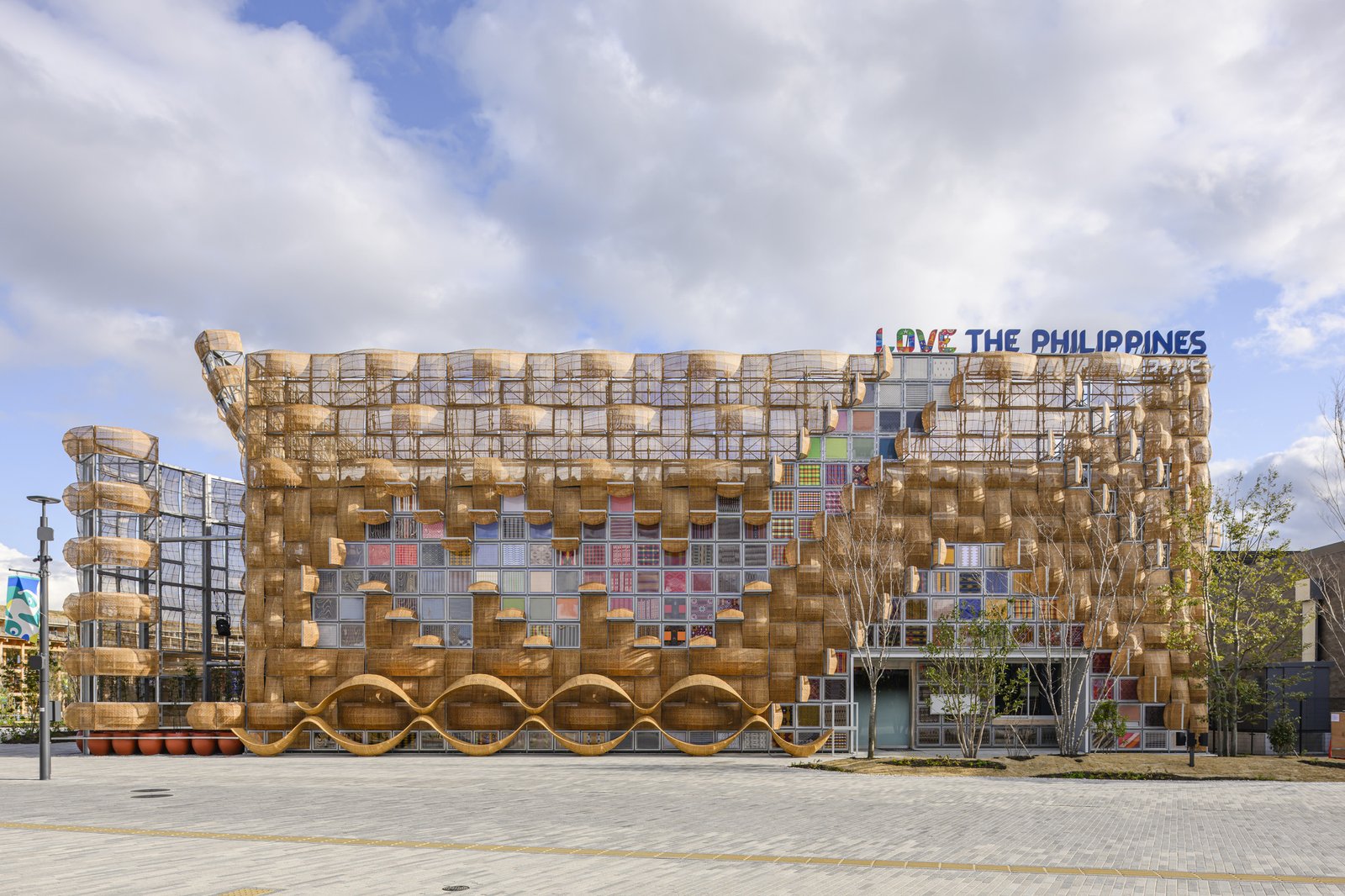

The penultimate section of the pavilion showcases the Filipino love for photos during memorable events. Selfie stations were set up, though they weren’t fully operational during my early visit. “Filipinos love selfies, that’s no secret,” Garcia notes. “With Tellart, we’ve taken it a step further by offering visitors a chance to capture a truly unique experience.” With the help of AI, visitors can input their favorite aspects of the Philippines, whether it’s a favorite fruit or plant, and integrate those into their selfies. The result is a playful, kawaii keepsake that will likely resonate with the local crowd.
Things take a turn from fiesta-like energy to a more relaxed, tropical resort ambiance near the exit section, where the Habi gift shop will soon be filled with artisanal treasures (I hear ternos and prized textiles will be on sale). There’s also the Hain take-out counter serving Pinoy fare from Via Mare and an expo-exclusive hilot station, whose entrance is marked by an installation of suspended rattan modules. I jest on how having a massage area could guarantee long lines, especially with visitors walking for hours around the 155-hectare grounds. “Wait till you find out we also serve halo-halo!” Garcia laughs as we step outside into the golden afternoon.


Those outside the pavilion or on queue aren’t left without entertainment; every 5.30 and 7.30PM, live art performances inspired by weaving looms and threads will be performed by six members from Ballet Philippines to the strains of indigenous instruments. The dances will take place in the pavilion’s façade, which incorporates pivoting panels framed with indigenous textiles.
“This is the only pavilion with a ‘dancing’ façade!” I remember Calma sharing with gusto. “We often see architecture and performer as separate in a dance; this time, we want the performers to interact with the architecture, to ‘dance’ with the space.”
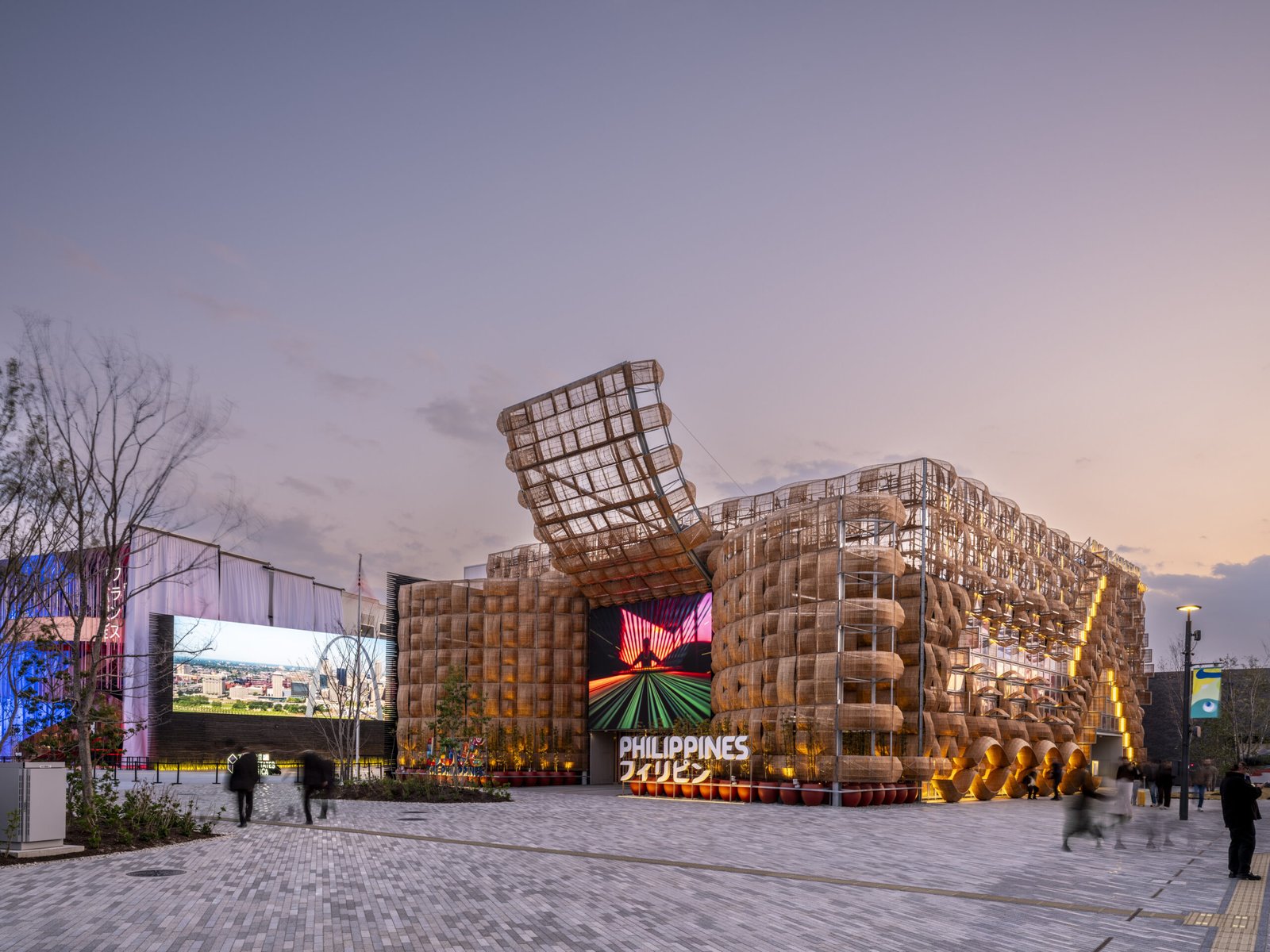

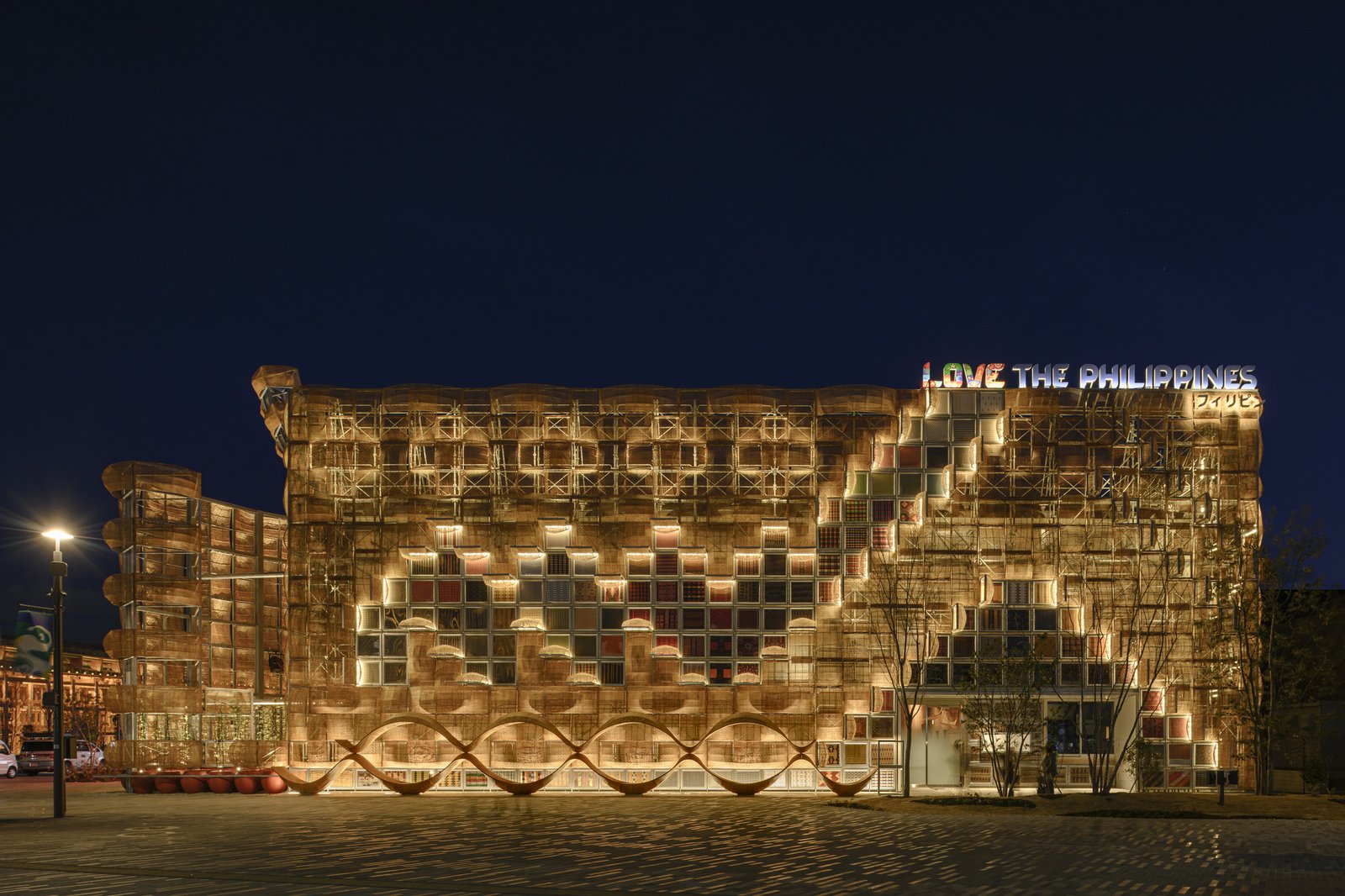

Passion and planet
Expo visitors appear to be in for quite a show at the Philippine Pavilion come 13 April to 13 October. Before I left to explore the rest of the Expo grounds, I threw one last question at Garcia: “What happens after the Expo?”
“Sustainability and circularity were foundational principles in the pavilion’s design,” Garcia explains. “The pavilion’s structural components, tapestries and textile panels…we ensured that most if not every element was conceived with a second life in mind. The modular, stackable design minimizes waste and contributes to a more sustainable future.”
Woven book produced by Carlo Calma Consultancy
“But I believe the question you really want to ask is what lasting impact will the pavilion have once it’s taken down?” Garcia adds. “This pavilion is our calling card; it’s an expression of who we are as a people and a nation. It reflects our diversity, our commitment to connection, and our embrace of technology.”
“As a representation of a complex archipelago, it’s not meant to be all things to all people, and it won’t resonate with everyone. But I believe our team were able to capture within the pavilion that sense of wonder, joy, and connection, be it to community or nature, that feels innate to us Filipinos. At its heart, this pavilion is an invitation to the world to discover our culture, our diversity, and our landscapes in a new light. Though the Expo will eventually end, the curiosity and connection it sparks will hopefully stay with visitors, encouraging them to rediscover and love The Philippines as much as we do.” •


Expo 2025 Osaka will run for six months, closing on October 13. Tickets and more information are available at the expo’s official website.

